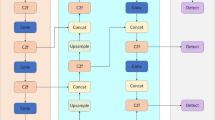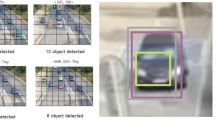Abstract
Camouflage image means the objects in foreground mingled with background in this context one prime area in machine vision application is identifying camouflaged objects in image for military and civilian needs. This paper proposes camouflage detection to identify one or more target objects in Camouflaged Images. In this work, a constructive approach presented by characterizing entity-texture and statistical modeling of Camouflaged Images in texture smoothing conditions. The Difficulties in this process are Images of different kinds, Atmospheric Turbulence, and Target Size. There are many potential applications where the needs of decamouflaging like: distinguishing original and duplicate in product production, military applications and autonomous systems where detection of objects in Camouflage images is essential. The implementation is carried out in different environments on camouflaged Images. The performance of the proposed technique is compared with existing methods using precision and recall.












Similar content being viewed by others
References
Anderson, A. J., & McOwan, P. W. (2013). Model of a predatory stealth behavior camouflaging motion. Proceedings of the Royal Society of London. Series B: Biological Sciences, 270(1514), 489-495. Sujit, K. Singh et al. IERI Procedia 4, 351.
Arivazhagan, S., Ganesan, L., & Angayarkanni, V. (2005). Color texture classification using wavelet transform. In Sixth International Conference on Computational Intelligence and Multimedia Applications (ICCIMA’05), Las Vegas, NV, USA (pp. 315–320).
Chu, H. K., Hsu, W. H., Mitra, N. J., Cohen-Or, D., Wong, T. T., & Lee, T. Y. (2010). Camouflage images. ACM transaction on Graphic (Vol. 29), ISSN-0730-0301.
Gomes, J. P. P., Brancalion, J. F. B., & Fernandes, D. (2008). Automatic target recognition in synthetic aperture radar image using multiresolution analysis and classifiers combination. In 2008 IEEE Radar Conference (pp. 1–5). IEEE.
Haralick, R. M., Shanmugam, K., & Dinstein, I. H. (1973). Textural features for image classification. IEEE Transactions on systems, man, and cybernetics,6, 610–621.
Huerta, I., Rowe, D., Mozerov, M., & Gonzalez, J. (2007) Improving background subtraction based on a casuistry of color-motion segmentation problems. In IbPRIA ‘07 Proceedings of the 3rd Iberian conference on Pattern Recognition and Image Analysis, Part II (pp. 475–482) Springer.
Kavitha, R. E. C., & Prabhakara Rao, B., & Govardhan, A. (2011). An efficient content based image retrieval using color and texture of image sub blocks. International Journal of Engineering Science and Technology (IJEST) ISSN: 0975-5462 (Vol. 3 No. 2).
Kumar, D., & Varma, S. (2009). Multiresolution framework with Neural Network approach for Automatic Target Recognition (ATR). In Proc: ICSAAP (pp. 168–173). IEEE Computer Society.
Li, L., Huang, W., Gu, I. Y. H., & Tian, Q. (2004). Statistical modeling of complex backgrounds for foreground object detection. IEEE Transactions on Image Processing,13(11), 1459–1472.
Mahmoodabadi, S. Z., Ahmadian, A., Abolhasani, M. D., Eslami, M., & Bidgoli, J. H. (2005). Feature extraction based on multiresolution wavelet transform. IEEE Proceedings,33, 3902–3905.
Manikandan, J., Venkataramani, B., & Jayachandran, M. (2007). Evaluation of edge detection techniques towards implementation of automatic target recognition. In Proc: Computational Intelligence and Multimedia applications (pp. 441–445).
Pan, Y., Chen, Y., Fu, Q., Zhang, P., & Xu, X. (2011). Study on the camouflaged target detection method based on 3D convexity. Modern Applied Science,5(4), 152–157.
Ravichandran, B., Gandhe, A., Smith, R., & Mehra, R. (2007). Robust automatic target recognition using learning classifier systems. In Proc: information fusion (pp. 252–265).
Saraswat, M., Goswami, K., & Tiwari, A. (2013). Object recognition using texture based analysis. International Journal of Computer Science and Information Technologies,4(6), 775–782.
Sastry, C. S., Pujari, A. K., Deekshatulu, B. L., & Bhagvati, C. (2004). A wavelet based multiresolution algorithm for rotation invariant feature extraction. Pattern Recognition Letters,25(16), 1845–1855.
Sengottuvelan, P., Wahi, A., & Shanmugam, A. (2008). Performance of decamouflaging through exploratory image analysis. In ICETET 2008. IEEE.
Shan, Z., & Aviyente, S. (2005). Image denoising based on the wavelet co-occurrence matrix. In Proc:ICASSP (pp. 645–648). IEEE.
Sheikh, Y., & Shah, M. (2005). Bayesian modeling of dynamic scenes for object detection. IEEE Transactions on Pattern Analysis and Machine Intelligence,27(11), 1778–1792.
Singh, S. K., Dhawale, C. A., & Misra, S. (2012). Survey of object detection methods in camouflaged image. In Proc: IERI (pp. 1–6).
Tankus, A., & Yeshurun, Y. (2000). Convexity based visual camouflage breaking pattern recognition proceedings. In 15th International Conference Page(s) (Vol. 1, pp. 454–457). IEEE.
Tsai, D. M., & Chiang, C. H. (2002). Rotation-invariant pattern matching using wavelet decomposition. Pattern Recognition Letters,23(1–3), 191–201.
Van de Wouwer, G., Scheunders, P., & Van Dyck, D. (1999). Statistical texture characterization from discrete wavelet representations. IEEE Transactions on Image Processing,8(4), 592–598.
Xu, L., Yan, Q., Xia, Y., & Jia, J. (2012). Structure extraction from texture via relative total variation. ACM Transactions on Graphics (TOG),31(6), 1–10.
Zhang, X., Zhu, C., Wang, S., Liu, Y., & Ye, M. (2016). A Bayesian approach to camouflaged moving object detection. IEEE Transactions on Circuits and Systems for Video Technology,27(9), 2001–2013.
Author information
Authors and Affiliations
Corresponding author
Additional information
Publisher's Note
Springer Nature remains neutral with regard to jurisdictional claims in published maps and institutional affiliations.
Rights and permissions
About this article
Cite this article
Pulla Rao, C., Guruva Reddy, A. & Rama Rao, C.B. Camouflaged object detection for machine vision applications. Int J Speech Technol 23, 327–335 (2020). https://doi.org/10.1007/s10772-020-09699-7
Received:
Accepted:
Published:
Issue Date:
DOI: https://doi.org/10.1007/s10772-020-09699-7




